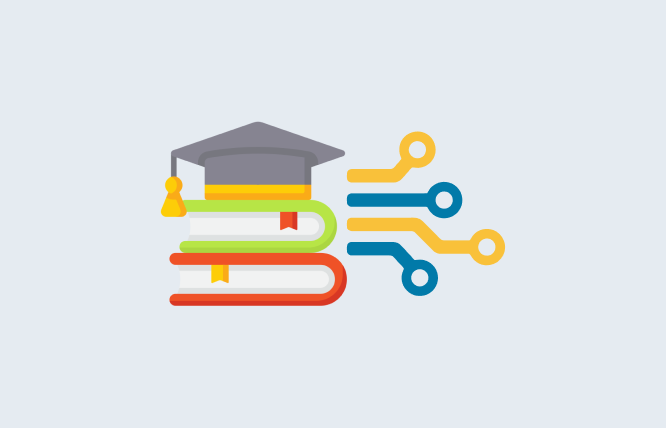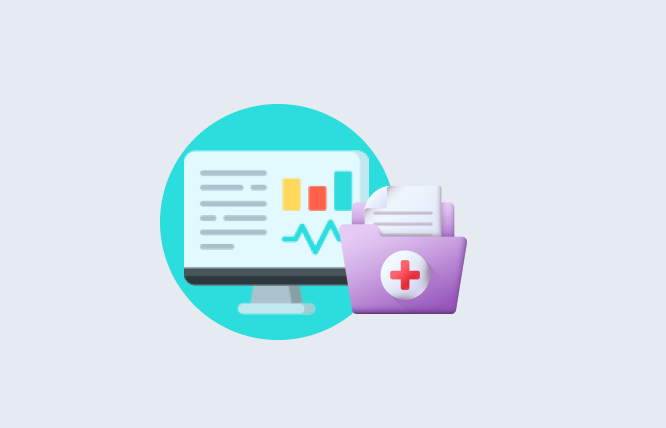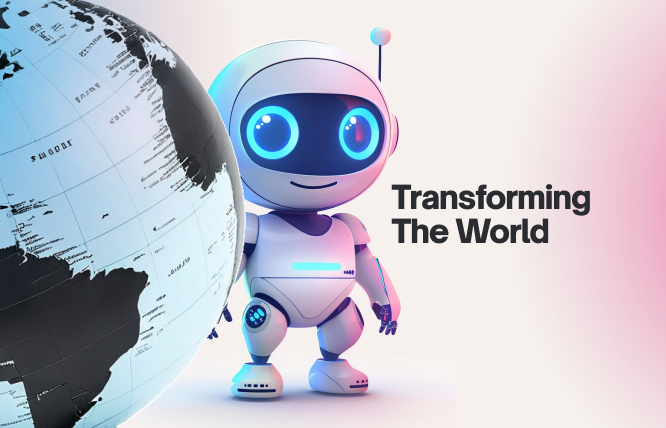Introduction
This blog sheds light on trends shaping the digital transformation in education, exploring how technology is creating a more personalised, engaging, and accessible learning experience for all students.
A staggering 95% of educators believe technology (digitalisation) is the future of education. This isn’t just about a few extra laptops in the classroom; technological advancement is driving a paradigm shift.
Technology alters how we learn and teach. So, what has to be radically rethought?
This blog delves into some of the fascinating concepts of Digital Transformation in Education, as well as showcasing how digital solution providers are creating new resources to give teachers greater control and stimulate student interest.
Making Use of AI for Adaptive Learning Paths
Artificial intelligence (AI) takes education to the next level by personalising the learning experience for each student.
Modern learning management software integrated with AI algorithms can now analyse student data to understand their strengths, weaknesses, and learning styles.
Based on this analysis, the technology solutions company generates adaptive learning paths, guiding students through customised learning journeys.
Adopting Gamification to Make Learning Engaging and Interactive
Gamification is an emerging concept to make learning even more engaging and interactive. Teachers may inspire their students and create an environment where they feel proud of their accomplishments by integrating game mechanics like points, badges, leaderboards, and prizes into educational resources.
It is observed that the students are more engaged and able to grasp difficult ideas when participating in gamified learning activities.
Moreover, gamification encourages teamwork and creativity as students work together to achieve common goals and solve challenges.
Virtual Field Trips & Real-World Simulations
Learning becomes fun with virtual field excursions and real-world simulations, which offer immersive experiences that go beyond what is possible in traditional classrooms.
Virtual and augmented reality (VR/AR) technology allows students to virtually travel to historic places, explore the underwater world, or even go into space without ever having to leave their classrooms.
The interactive nature of these virtual encounters piques students’ interest, encourages creative thinking, and strengthens their grasp of the subject matter. It bridges the gap between theory and practice; virtual field trips and real-world simulations enhance retention and comprehension.
Bringing Textbooks to Life: Augmented Reality Applications
Augmented reality (AR) apps are doing better than regular textbooks because AR makes learning more fun and exciting. In augmented reality, digital effects can be shown on real things to help us understand better. It adds more details, animations, and even simulations to help with learning.
For instance, augmented reality applications can help students better comprehend the human body by allowing them to see and interact with 3D representations of the organs and their structures. Augmented reality (AR) is a solid tool for educators looking to engage students, foster interest, and provide opportunities for hands-on learning.
Cloud-Based Learning: Education Anytime, Anywhere
Thanks to cloud-based learning systems, instructional resources are now accessible from any location at any time, completely transforming the way students study. Students have the freedom to learn at their own speed and on their own time using cloud-based learning, which includes downloading lecture notes, instructional videos, and online chats.
Moreover, cloud-based learning facilitates collaboration among students and educators, enabling seamless sharing of resources and fostering a sense of community in the virtual classroom.
Bridging the Digital Divide: Ensuring Equitable Access
As more and more schooling is done online, closing the digital gap has become very important. Many students have trouble using online learning tools since they don’t have access to consistent internet and gadgets.
Joint efforts are being made around the world; where educators and governments are developing initiatives to provide fair access to technology and digital learning tools. This includes programmes that aim to equip students with devices like computers or tablets, provide internet to places that currently lack it, and provide affordable or even free access to educational software and online courses.
Let’s bridge the digital divide so that all students may benefit from online education and participate in the digital transformation of learning.
AI-powered Chatbots & Virtual Tutors
Chatbots and virtual teachers that AI drives are changing the way that students get help and support as they learn. These smart virtual assistants use AI and NLP technology to communicate with students, guide them, answer their queries, and provide customised learning suggestions.
This facilitates students with real-time feedback on their work, clarification on difficult ideas, and help with homework from chatbots powered by artificial intelligence.
Collaborative Learning Platforms to Maintain Open Communication
Collaborative learning platforms play a crucial role in facilitating open communication and collaboration among students and educators. These platforms provide a centralised space where students easily collaborate on group projects, take active part in discussions, and share ideas and resources.
Through features such as discussion forums, group chat, and document sharing, collaborative learning platforms cultivate a sense of community and promote active engagement in the learning process.
Moreover, these platforms enable educators to monitor student progress, provide feedback, and facilitate peer-to-peer learning experiences.
Big Data & Learning Analytics
With the development of big data and learning analytics, educators now have access to potent resources that may improve their understanding of student progress, learning habits, and the efficacy of their lessons.
The use of learning analytics technologies enables teachers to track student’s interests and plan better for their growth. Moreover, big data analytics also permits institutions to make data-driven decisions, optimise resource allocation, and enhance the overall effectiveness of educational programs.
Promoting Skills-Based Assessments
Skills-based assessments are gaining traction in education as a more holistic and relevant approach to evaluating student learning and achievement. Unlike traditional assessments that focus primarily on the memorisation of students, skills-based assessments assess students’ ability to apply knowledge, think critically, solve problems, and demonstrate practical skills.
Common components of these assessments include projects, activities, or models that simulate the kinds of work students will face in their future careers. By promoting skills-based assessments, educators can better prepare students for success in the workforce and equip them with the skills and competencies needed to thrive in the digital age.
How You Can Implement Digital Transformation in Education
Implementing digital transformation in education requires careful planning, strategic decision-making, and effective implementation strategies. You can create a cross-platform mobile app development that caters to unique ideas of educational transformation.
Here are some steps you can take to successfully implement digital transformation in your institution:
Identify Your Institution’s Needs & Goals
Begin by assessing your institution’s current technological infrastructure, educational practices, and areas for improvement.
Identify specific challenges or pain points that digital transformation can address, such as outdated systems, inefficient processes, or disparities in access to technology.
Set clear goals and objectives for digital transformation, aligning them with your institution’s mission, vision, and strategic priorities.
Choose the Right EdTech Solutions
Once you’ve identified your institution’s needs and goals, research and evaluate potential EdTech solutions that align with your objectives.
Start by considering crucial factors like functionality, scalability, ease of integration, user-friendliness, and cost-effectiveness.
Engage key stakeholders, including educators, administrators, IT professionals, and students, in the selection process to ensure buy-in and alignment with organisational needs.
Encourage Innovation
Promote a culture of innovation and experimentation within your institution, encouraging educators to explore new teaching methodologies, instructional technologies, and learning resources.
Provide professional development opportunities, training programs, and support services to help faculty members integrate technology effectively into their teaching practices.
Foster collaboration and knowledge-sharing among educators, encouraging them to share best practices, successes, and lessons learned.
Conclusion
The digital revolution is transforming education, creating a more engaging and personalised learning experience. You now have the necessary insights related to trends associated with digital transformation in education. You got an idea about AI-powered learning, VR/AR experiences, and cloud-based platforms. Additionally, it provides a road map for schools and teachers to follow in order to adopt these innovations and realise digital learning’s full potential.
Frequently Asked Questions
Digital transformation offers a multitude of benefits, including:AI-tailored learning paths to individual student needs.Engaging experiences through VR/AR.Cloud-based learning to learn anytime, anywhere.Improved collaboration through online communication and teamwork.Data-driven insights based on big data.
Schools can implement digital transformation by following these steps:Assess current infrastructure and areas for improvement.Research and evaluate solutions that align with goals.Outline timelines, resource allocation, and training programs.Foster a culture of experimentation with new technologies and teaching methods.
Bridging the digital divide requires collaborative efforts from educators, governments, and technology companies. This can include:Providing affordable devices and internet access to underserved communities.Developing low-bandwidth learning materials for areas with limited internet connectivity.Creating custom website solutions for schools to manage online learning resources effectively.
Have questions or feedback?
Get in touch with us and we‘l get back to you and help as soon as we can!




